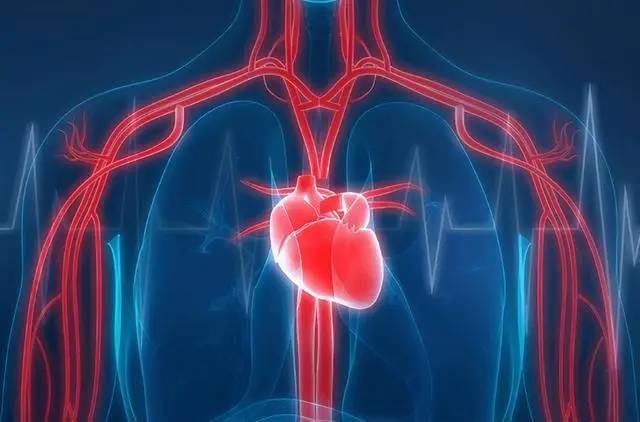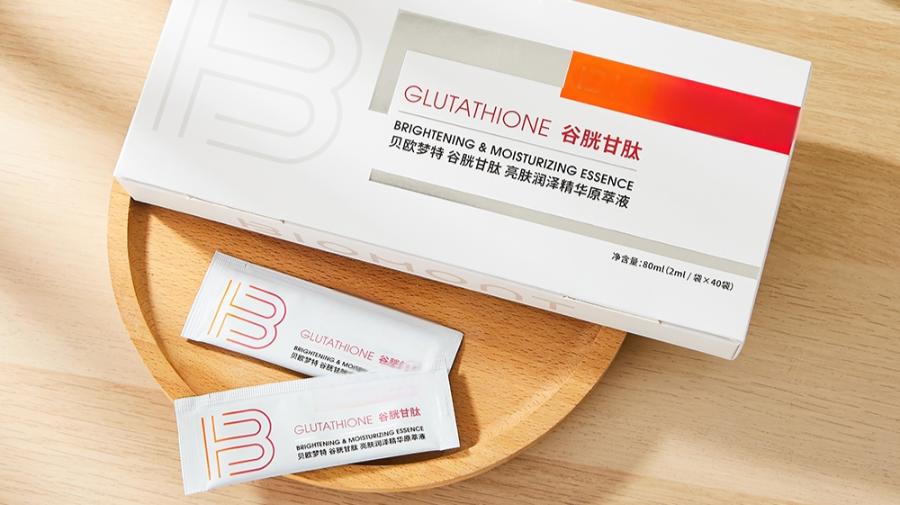Natural Glutathione Ingredients Power the Next Generation of Liver Health Products
Against the backdrop of the current health consumption upgrade, liver health is increasingly becoming a focal point for consumers. With the acceleration of modern life rhythms and lifestyle changes, the demand for liver care continues to grow, and scientifically substantiated natural ingredients are emerging as a key direction for product innovation. Leveraging its high-quality natural glutathione raw materials, Green Spring Technology provides professional solutions for upgrading liver protection products, helping brands establish differentiated advantages in the fiercely competitive market.
Core Advantages of Green Spring Technology's Natural Glutathione Raw Materials
Green Spring Technology rigorously selects natural raw materials and employs advanced yeast fermentation technology to produce glutathione, ensuring high purity and bioactivity. Our comprehensive quality control system guarantees batch-to-batch consistency and establishes reliable supply chain management, providing sustained, stable quality assurance for clients' liver health products.
These advantages directly translate into market competitiveness for your products: enhancing technological sophistication, boosting consumer trust, and establishing a professional brand image.
What can Green Spring Technology's natural glutathione raw materials offer you?
★ Enhance Product Technological Competitiveness
Leveraging glutathione's well-established scientific mechanisms and our raw materials' exceptional quality, you can develop products with solid scientific backing. This significantly elevates formulation professionalism and credibility, creating a technological barrier against competitors.
★ Accelerate product innovation
Beyond premium raw materials, we provide proven formulation references and application technical support. This helps shorten R&D cycles, enabling swift launch of innovative liver care products that meet market demands.
★ Strengthen brand expertise
The dual advantage of “natural origin + scientific validation” enhances your product's persuasiveness in marketing communications. It effectively builds your brand's professional image in liver health, earning deep consumer trust.
★ Ensuring Long-Term Market Viability
Our stable raw material supply and consistent quality assurance guarantee sustained market performance for your products, laying a solid foundation for your brand's sustainable development.

Green Spring Technology is committed to being your trusted partner. We look forward to collaborating with you to seize growth opportunities in the liver health market and jointly create market-leading benchmark products.
1 The Scientific Mechanism of Glutathione in Liver Protection
As a vital natural intracellular antioxidant, glutathione protects the liver through three primary mechanisms:
1.1 Cellular Antioxidant Protection
The active sulfhydryl group in glutathione molecules is central to its function, effectively countering oxidative stress by directly scavenging free radicals. This helps maintain the structural integrity and functional stability of hepatocytes.
1.2 Comprehensive Metabolic Regulation Support
Glutathione naturally participates in the body's carbohydrate, lipid, and protein metabolic processes. By supporting normal hepatic metabolic functions, it provides comprehensive physiological support for hepatocyte health.
1.3 Efficient Detoxification Function Application
As a vital detoxification factor in the body, glutathione plays a key role in promoting the metabolism of exogenous substances, helping to reduce the metabolic burden on the liver.
2 Glutathione Ingredients Empower Liver Protection Product Innovation
Leveraging glutathione's proven hepatoprotective mechanisms and exceptional raw material properties, Green Spring Technology empowers you to precisely target the liver health market and create your next star product. Our glutathione ingredients deliver critical support for your product development:
2.1 Expand Product Formats to Cover Diverse Consumption Scenarios
Our high-purity glutathione raw material can be flexibly applied across multiple product formats:
● Oral liquids and tablets: Develop portable, precisely dosed daily liver-support supplements.
● Functional beverages and powdered drinks: Create trendy “light maintenance” health drinks targeting young night owls and social professionals.
● Special dietary foods: Integrate into meal replacements, nutrition bars, and similar products to meet consumers' liver health needs in busy lifestyles.

2.2 Precisely target niche markets to create differentiated selling points
Leveraging glutathione's scientific backing, your products can precisely align with specific consumer segments:
◆ Business socializers: Emphasize concepts like “alcohol metabolism support” and “auxiliary protection against chemical liver damage.”
◆ Urban Night Owls: Emphasize core functions like “nighttime liver care” and “combating oxidative stress.”
◆ Middle-aged and Elderly Health Market: Focus on long-term maintenance values such as “basic metabolic regulation” and “inner youthful vitality.”
2.3 Strengthen Scientific Claims to Build a Professional Brand Image
Selecting Green Spring Technology's glutathione raw material provides your product with a robust scientific foundation:
▲ You can leverage evidence-based functional claims like “cellular-level antioxidant protection” and “metabolic regulation.”
▲ Our raw material test reports and scientific literature effectively support enhancing your product's professional credibility and consumer trust.
We believe that with glutathione as the core ingredient, your liver health products will achieve sustained growth in competitive markets through “scientific substance” and “precise positioning.”
Partner with Green Spring Technology to pioneer a new era of liver health products
Green Spring Technology steadfastly upholds the development philosophy of “Science-Based, Quality First,” committed to being your most reliable innovation partner for liver health products. We not only provide high-purity natural glutathione powder through stringent quality control but also boast an experienced technical support team offering comprehensive expertise from formulation design and process optimization to market positioning.
Against the backdrop of health consumption upgrades, the liver care market is experiencing unprecedented growth opportunities. By choosing Green Spring Technology, you gain:
■ Functionally-driven ingredient solutions grounded in cutting-edge scientific research
■ Expert guidance on regulatory-compliant product claims
■ Stable and reliable supply chain assurance
■ Continuous innovation in application technology support
We firmly believe that precisely aligning glutathione—this exceptional natural ingredient—with market demands will redefine the landscape of liver protection products. Green Spring Technology looks forward to partnering with you to transform scientific breakthroughs into market-competitive innovations, jointly advancing the liver health industry toward greater scientific rigor and professional excellence.
To date, we have delivered successful ingredient solutions to multiple industry-leading enterprises, accumulating extensive product development expertise. Regardless of your product planning stage, we are eager to explore collaboration opportunities.
Take action now and embark on your product upgrade journey!
Contact us at helen@greenspringbio.com or WhatsApp: +86 13649243917 for complimentary samples and technical materials. Let us tailor liver health product solutions specifically for you.
Choose Green Spring Technology. Together, let's provide consumers with safer, more effective health choices and jointly pioneer a brighter future for the liver health industry!
References:
[1] Douglas KT. Mechanism of action of glutathione-dependent enzymes. Adv Enzymol Relat Areas Mol Biol. 1987; 59: 67-103.
[2] Meister A. Glutathione metabolism and its selective modification. J Biol Chem. 1988 Nov; 263(33): 8-17.
[3] Jefferies H, Coster J, Khalil A, Bot J, McCauley RD, Hall JC. Glutathione. ANZ J Surg. 2003 Jul; 73(7): 22-45.
[4] Nishizawa S, Araki H, Ishikawa Y, et al. Low tumor glutathione level as a sensitivity marker for glutamate-cysteine ligase inhibitors. Oncol Lett. 2018 Jun; 15(6): 8735-8743.
[5] Wu G, Fang YZ, Yang S, et al. Glutathione metabolism and its implications for health. J Nutr.2004 Mar; 134(3): 89-92.
[6] Mårtensson J, Lai JC, Meister A. High-affinity transport of glutathione is part of a multi com- ponent system essential for mitochondrial function. Proc Natl Acad Sci U S A. 1990 Sep; 87(18): 71-85.
[7] Sies H. Glutathione and its role in cellular functions. Free Radic Biol Med. 1999 Nov; 27(9- 10): 16-21.
[8] Gaucher C, Boudier A, Bonetti J, Clarot I, Leroy P, Parent M. Glutathione: Antioxidant Prope -rties Dedicated to Nanotechnologies. Antioxidants (Basel). 2018 Apr; 7(5): 62.
-
Prev
Green Spring Technology's Glutathione Ingredient Solutions: Empowering Your Wellness Products
-
Next
Premium Liposomal Glutathione | Advanced Inner Beauty Support


 English
English French
French Spanish
Spanish Russian
Russian Korean
Korean Japanese
Japanese



